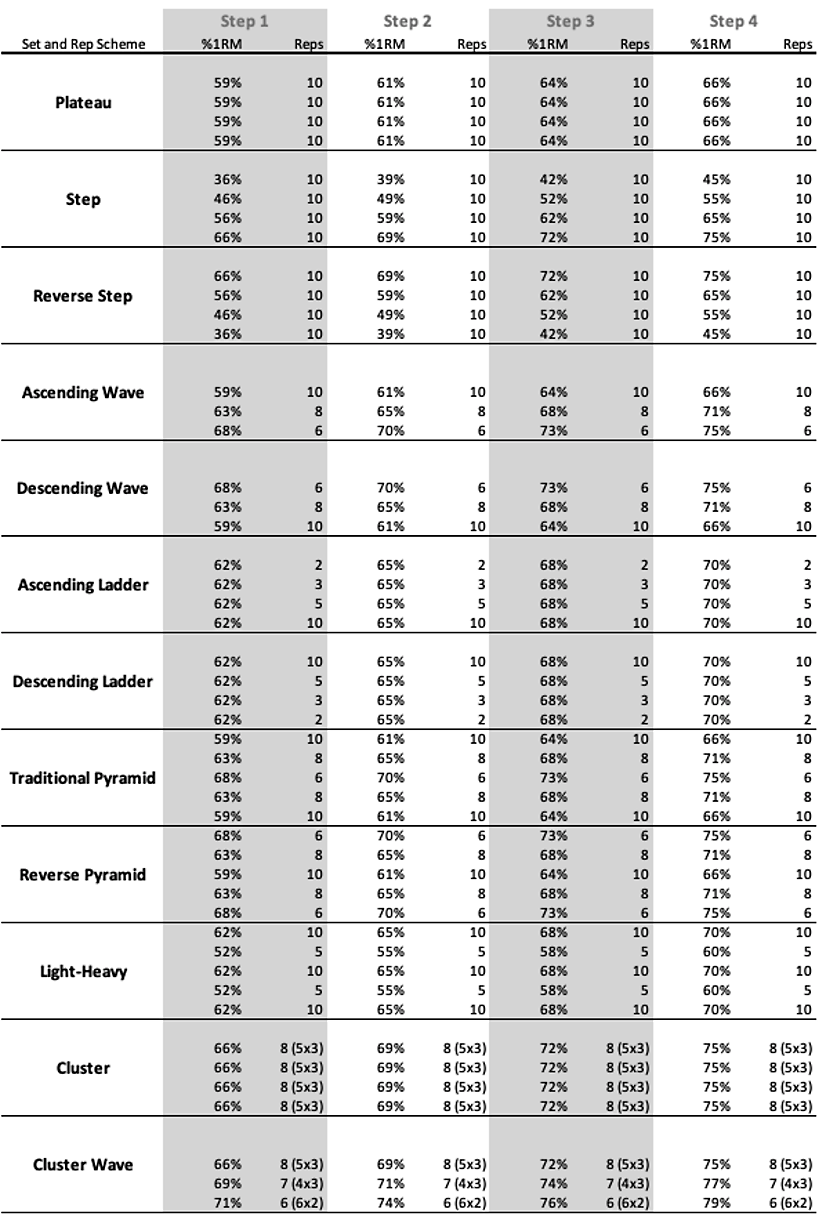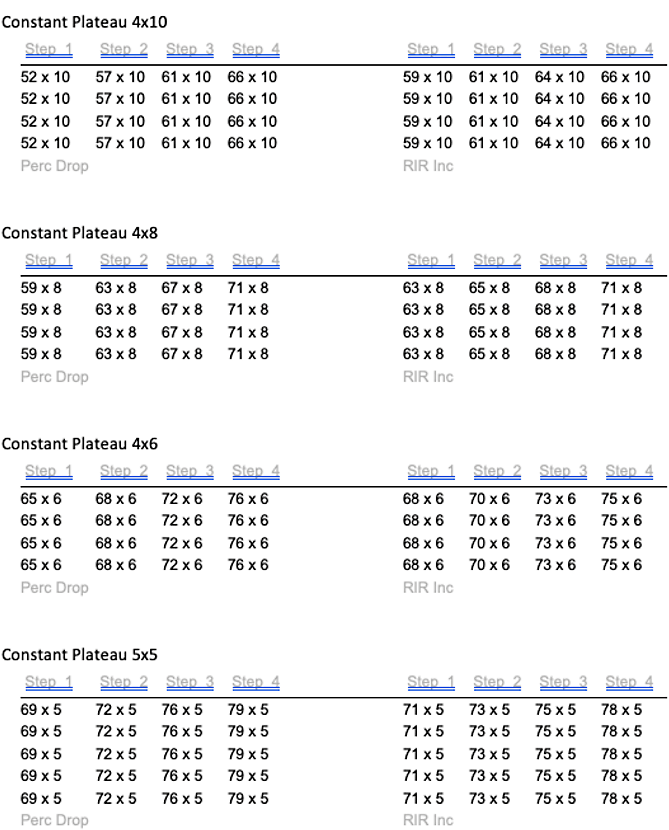Strength Training Manual: Planning – Part 5
1. Introduction
2. Agile Periodization and Philosophy of Training
3. Exercises – Part 1 | Part 2
4. Prescription – Part 1 | Part 2 | Part 3
5. Planning – Part 1 | Part 2 | Part 3 | Part 4 | Part 5 | Part 6
I am very happy to announce that I am finishing the Strength Training Manual. I decided to publish chapters here on Complementary Training as blog posts for two reasons. First, I want to give members early access to the material. And second, this way I can gain feedback and correct it if needed before publishing it.
I look forward to hearing your thoughts.
Enjoy reading!
Mladen’s Methodological System of Classifying Set and Rep Schemes
As outlined in Figure 5.33, additional approach to classify set and rep scheme that will be explained in this section is “methodological” approach. The set and rep methods that follow can be applied to different rep ranges, qualities, toughness and volume variants. These will be combined with the aforementioned vertical planning progression to generate really extensive bucket of set and rep schemes that can be found in the Appendix.
Table 5.35 contains a list of 12 different set and reps schemes methods. For the sake of simplicity, each utilized 4×10 (except Cluster and Cluster Wave methods) and Constant vertical planning progression.

Table 5.35. Mladen’s Methodological System of classifying Set and Rep schemes.
Plateau method
Plateau method is your bread-and-butter set and rep scheme. It revolves around the same weight and reps across multiple sets. Famous 5×5 program utilizes a plateau method, as well as ‘volume’ or ‘medium’ workout days in the intermediate Starting Strength programs (Rippetoe & Kilgore, 2011; Rippetoe, Baker & Bradford, 2013):
Wednesday: Squats 3×5 @65% (sets across or Plateau method) (Easy)
Friday: Squats 1×5 @85% (ramp up set of 5)
Plateau method is very useful in phases and workouts where the volume is more important (or emphasized). It can become boring, since there is no variety, just same sets across. It could be very useful in the after-sets as a back-off approach:
Back-off sets 90% of 3RM for 5 sets of 3
Example: ramped up to 100kg for 3 reps, followed by 5×3 with 90kg
Plateau can also be used with assistance exercises. All in all, it is a very versatile method. Table 5.36 contains example of 4×10, 4×8, 4×6 and 5×5 Plateau set and rep schemes using Constant vertical planning progression. Please note that the name of set and rep schemes follows “Vertical Planning Progression + Scheme + Set/Rep” formula. Plateau methods most often use the extensive columns in the Perc Drop and RIR Inc tables to estimate %1RMs progressions. Appendix contains a full list of set and rep schemes.

Table 5.36. Example of 4×10, 4×8, 4×6 and 5×5 Plateau set and rep schemes using Constant vertical planning progression.
Step method
Step method, or ramp-up, revolves around keeping the reps stable, but progressing %1RM. This progression is often done in 5-10% increments:
75% x 5
85% x 5 (top set or a special set)
Programs such as 5/3/1 utilize Step method for the main exercises (Wendler & Koss, 2013; Wendler, 2017). Step method is excellent for ballistic movements, since it slowly increases the weight (Baker, 1995). This tends to be followed with one or more back-off sets to utilize the PAP effect of the top set, or to increase volume/dose:
Step method also involves ramping up to a nRM (repetition maxes), e.g., 5RM, 3RM, or 1RM (daily max) and basing back-off sets using those RMs (e.g. using 80-90% of daily RM). Tables presented in this manual can be a useful guiding tool to get a rough estimate of those RMs. Here is an example:
60kg x 3
70kg x 3
80kg x 3
90kg x 3
95kg x 3
100kg x 3 (3RM for today)
80kg x 5 reps x 5 sets (back off using Plateau method)
Daily nRM is a very useful method if one doesn’t want to use percent based approach, nor 1RM testing. Adding RIR also works (I suggest using percent based tables to give you a guide for easier finding of the weight even if you do not use them):
Vertical planning implemented with daily RM approach might involve reducing RIR over time, decreasing reps, increasing sets, or using the back-off sets to progress. Here is one example:











Responses